[00:00:03.94] [MUSIC PLAYING]
[00:00:06.41] WALTER ISAACSON: Washington DC. It’s 1904, and the train from Chicago is right on time. That tense looking gentleman watching passengers disembark is Lyman Pierce. If he looks like a guy with a lot on his mind, it’s with good reason. Pierce is an executive with the Washington branch of the YMCA. Two years earlier, he coaxed the board of directors to authorize a $350,000 fund raising drive for a new building. Pierce had gone about doing what fundraisers did in those days. He held a ball for wealthy industrialists and high society folk, and gently coaxed them into making big ticket donations. It had gone well– for a while, anyway.
[00:00:50.57] The YMCA had raised $270,000, including a $50,000 donation from John D. Rockefeller, Sr. But after two years, the campaign had stalled, and stalled badly. A passenger on that Chicago train was coming to help. He was Charles Sumner Ward of the YMCA Chicago office, and a man whose fundraising skills had made him a legend within the organization.
[00:01:21.11] The two men couldn’t have known that the trails they were about to blaze would be followed for generations to come. Pierce and Ward realized that the big donor approach had gone as far as it could, so they decided to try something new– a fundraising campaign aimed at a broad, middle class audience. First, they hired a publicist, a first in fundraising. Then they found donors to underwrite an advertising campaign– another first. Readers were then engaged as players in a story– a story that came complete with its own, built-in tension. Will Washington DC’s YMCA reach its fundraising goal?
[00:02:09.76] A key part of the strategy was a strict, if somewhat arbitrary, 27 day deadline. Pierce and Ward knew that a constricted timeline would create more buzz and more publicity then a longer one. The final touch was a donation clock, updating progress towards the goal. Call it the DNA ancestor of the fundraising thermometer. With the wild success of the campaign, other organizations soon adopted the techniques that Pierce and Ward had created– techniques that came to be known as the YMCA School of Fundraising. This is the story of now and then, and all the disruptions in between– of the trailblazers who’ve taken fundraising from passing the hat to engage, share, click, give. I’m Walter Isaacson, and this is “Trailblazers,” an original podcast from Dell Technologies.
[00:03:14.52] WOMAN 1: So please, give the best you can.
[00:03:18.04] [MUSIC PLAYING]
[00:03:23.08] MAN 1: Our nation was organized to promote the general welfare.
[00:03:26.81] MAN 2: There are a lot of folks who care.
[00:03:28.86] MAN 3: By giving to help those who are less fortunate, we help ourselves.
[00:03:33.14] MAN 4: Money to fight cancer, help for polio– each cause, worthy.
[00:03:37.44] MAN 5: We’ll be stronger to make a better world.
[00:03:40.32] [MUSIC PLAYING]
[00:03:44.20] WALTER ISAACSON: During the 1920s, American charitable donations jumped by more than 50% to $2.7 billion, partly due to the advent of national charities– organizations that had joined forces to raise funds, collectively. They included the Child Welfare League of America, the American Federation for the Blind, and Big Brothers and Big Sisters. And it was just when these major charities felt like they had finally hit their groove that a new medium came along and disrupted everything– radio.
[00:04:24.04] Radio not only impacted the way people got their news information and entertainment, it also had an effect on the way that connected to large scale charities, thanks in no small part to a popular entertainer known to millions as Old Banjo Eyes.
[00:04:40.38] EDDIE CANTOR: (SINGING) I had a dozen girls last summer, and each one’s name was Rose.
[00:04:47.92] WALTER ISAACSON: By late November, 1937, Eddie Cantor was a celebrated vaudeville star, singer, actor, comedian, and radio performer. Sitting in an office at Metro-Goldwyn-Mayer Studios, Cantor mulled a new challenge. That fall, President Franklin Roosevelt had founded the National Foundation for Infantile Paralysis. Roosevelt, who had been paralyzed since 1921, enlisted Cantor to help create a national campaign. For years, Cantor had helped the President with charity work.
[00:05:25.03] SHEILA MOESCHEN: They would do large scale events like parades and huge charity fundraisers, most notably around President Roosevelt’s birthday.
[00:05:36.04] WALTER ISAACSON: Sheila Moeschen is the author of Acts of Conspicuous Compassion, Performance Culture, and American Charity Practices.
[00:05:47.57] SHEILA MOESCHEN: So they were these gala fundraising events, and within those events, they put on these pageants. And at the time, pageants were a kind of performance where they would display large thematic experiences. So the early pageants were about the themes of America. So you would have, literally, women dressed as waves of grain and gold coins and silver and things like that. You know, the resources of America. It was a crazy thing to be having, in relation to raising money to eradicate a deadly disease.
[00:06:26.86] WALTER ISAACSON: Cantor, like the President, realized the success of the campaign required them to use radio. What they needed was a simple, resonant idea. It was then, according to legend, that Cantor gazed down for a few moments, then declared, we’ll call it the March of Dimes, a play on the March of Time newsreels popular in those days.
[00:06:55.00] SHEILA MOESCHEN: The March of Dimes– they really knew how to use radio to disseminate their message. So every January, to coincide with Roosevelt’s birthday, they would do the dime drives. So that would be a week long event throughout the country. So they were doing radio spots leading up to the campaign and throughout the week.
[00:07:14.29] WALTER ISAACSON: The March of Dimes was the first big national charity to mobilize the stars of film and radio.
[00:07:22.00] SHEILA MOESCHEN: They would enlist radio celebrities at the time to basically record solicitations– to get involved in the dime drive, that kind of thing. So they added that celebrity element, which plays a greater role as the 20th and 21st centuries have progressed.
[00:07:40.06] MAN 6: I think there is a spot in your heart and a dime in your pocket for these children, for the March of Dimes that keeps their hope alive.
[00:07:46.30] WALTER ISAACSON: From Jack Benny and Clark Gable to Marilyn Monroe and Elvis Presley, to more recently, Jennifer Lopez, Reese Witherspoon, and Jessica Alba, the March of Dimes grew and thrived, in part, through the power of celebrity endorsements.
[00:08:02.04] SHEILA MOESCHEN: It was this really, really interesting combination between entertainment, but then that charity aspect, and then also, because the President was sort of the figurehead of this, you had that kind of patriotic sentiment that was woven through. And that’s kind of a strange thing for us to think about now, where we have separation between our charity drives, typically, and our government.
[00:08:32.76] WALTER ISAACSON: By the 1950s, television was displacing radio as the it medium, and a new fundraising vehicle was born– the telethon– live broadcasts urging the audience to donate by telephone. Soon, armies of entertainers were recruited for local telethons for any number of causes. Among them were the Bell Sisters, a teenage singing duo from Seal Beach, California. As one of the Bell Sisters, Cynthia Bell recalls, the atmosphere backstage was often less than organized.
[00:09:12.18] CYNTHIA BELL: You were out on your own. When you got to a telethon, you had not a clue how well or how unwell it was going to be run. Everything was a volunteer. Everything was a person who had wandered in and said, yeah, I’d be glad to. Not necessarily had they ever put on a telethon. Not necessarily had they ever met any musicians. Not necessarily did they know what they were supposed to do, because nobody knew what they were going to do. It was the first time, maybe, that the Salvation Army had ever put one on. So it was a zoo. That’s the best way I can explain it.
[00:09:51.70] WALTER ISAACSON: A decade later, on a Labor Day weekend in the mid-1960s, a national charity took a considerable gamble. Buoyed by the success of smaller television events, the Muscular Dystrophy Association of America launched its first live national fundraising telethon. The host was its national chairman, Jerry Lewis, long since having parted ways with Dean Martin. The annual event became a Labor Day fixture, in large part because of the edgy unpredictability of its host, such as the time in 1976 when the host decided to shake down his studio audience. Sheila Moeschen.
[00:10:37.92] SHEILA MOESCHEN: There’s a portion later into the night where he actually kind of stalks the audience and exhorts the studio audience to give him money, like, right out of their pockets. And it’s kind of a weird moment because what happens is that he’s sort of dancing around and he’s listening to the music, and then he sort of rants. He sort of works himself up into a rant, and he starts to look at the camera and starts to say, you know, we’ve had a lot of fun here tonight, but you know, I don’t see those tallies going up. I don’t see the totals going up. And he’s almost angry. He’s sort of inciting the viewer at home to get off– he doesn’t say, ass, but he’s saying, you know, get off your butt and call in a donation and everything.
[00:11:25.30] And then he asks one of the stagehands to give him a bucket. There’s a red bucket that’s nearby. And he’s like, I should have thought of this hours ago. And so he starts to take the bucket and he starts to go into the audience. But he goes into the audience and he’s saying, get out your money, I want to see it. He goes, put it in there! Stick it in there! It’s really vulgar when you watch it, and it’s quite unnerving.
[00:11:51.79] WALTER ISAACSON: Cynthia Bell performed at several of these telethons and had a front row view to all the strange energy an unpredictable star like Jerry Lewis was capable of creating.
[00:12:04.27] CYNTHIA BELL: It was a big thing for him to do this year after year, and try and bring in as much money as he could. And he was on stage for maybe 36 hours. He was dead sometimes. He was exhausted. He wasn’t afraid to pick up a child or shake its hand or pat him on the head or hold them. And he’d, in some cases, take them out of the arms of the parents or take them out of a wheelchair. You might see the pain on the child’s face when he’s being lifted up or you might see some kind of reaction being taken from a parent. This is not an easy thing to do. And to be doing it for 36 hours or longer– you get kind of on the rummy side.
[00:12:49.05] WALTER ISAACSON: In 1984, a new kind of fundraising messenger emerged. When Boomtown Rats lead singer Bob Geldof saw reports of famine in Ethiopia, he got an idea. He called his friend, Midge Ure, and the two quickly wrote a song to promote famine relief. Then they worked the phones. On November 25, an A-list of British music stars gathered in London’s Sarm Studios to record the single, Do They Know It’s Christmas under the collective name, Band Aid. The single was released just three days later, climbed to the top of the charts, and stayed there. Soon, an all-star concert was arranged for Wembley Stadium and dubbed Live Aid. Sheila Moeschen.
[00:13:42.36] SHEILA MOESCHEN: I think what was unique about Live Aid was the real entertainment aspect of it. That that was really the crux of it. They were not interested in opening offices to get resources. There were no other arms of this. It was purely we released a single, and then now we’re going to do this massive multi-coordinated concert event. And that really drove everything.
[00:14:18.71] WALTER ISAACSON: Celebrity driven fundraising wasn’t new, but the concentrated star power and multi-platform rollout of Band Aid, combined with America’s We Are the World and Live Aid concerts, was unprecedented. But Band Aid and Live Aid weren’t without their critics.
[00:14:38.40] WILLIAM EASTERLY: It’s an approach that seems to kind of be very disrespectful to the dignity of poor people.
[00:14:44.48] WALTER ISAACSON: William Easterly is a professor of economics at New York University and author of the book, “The Tyranny of Experts.”
[00:14:52.86] WILLIAM EASTERLY: It’s a classic example of what has become very widely known in development as poverty porn or disaster porn, in which , exaggerated, negative images are used to kind of raise money for fighting poverty. And that’s become a very widespread practice with NGOs around the world.
[00:15:12.53] WALTER ISAACSON: With the rise of television, the use of visuals in fundraising led to a controversial technique still widely used. Viewers are shown images of devastation and hardship, often featuring children, evoking a sense of pity. Viewers are then offered a chance to ease their discomfort by making a donation and becoming part of the solution. Sheila Moeschen.
[00:15:38.27] SHEILA MOESCHEN: It’s not so much a misrepresentation as it amplifies a sort of set of sentimental cues or a set of emotional cues that then are supposed to kind of trigger something in the viewer or whoever is witnessing the image, to say, that makes me feel terrible. I can donate and help stop that.
[00:16:07.12] WALTER ISAACSON: With the advent of each disruptive new media channel, from letters to advertising to phones, radio, and television, the fundraising world adapts, going always where the crowd is. And today, that crowd is online, and that has inspired a whole new breed of fundraiser. In the fall of 2003, three Australian men sat in a pub talking about fashions and trends. A few beers later, they made a pact to grow mustaches throughout the month of November, with prizes for the best and worst awarded at a month end party. To name this contest, they playfully conflated mustache and November into Movember.
[00:16:57.25] The first Movember was a hit, at least for the small group involved. One of these original three was Adam Garone. He was inspired by campaigns to fight breast cancer, and wondered if there wasn’t a way to use Movember to, as the slogan would read, change the face of men’s health. Garone cold called the CEO of Australia’s Prostate Cancer Foundation, met him for coffee, and pitched him on the Movember idea. The CEO laughed, thanked him, and declined the offer, adding, if you happen to make any money out of this, we’ll gladly take it.
[00:17:40.36] That year, 450 men raised $54,000 and donated all of it to the Prostate Cancer Foundation, the largest single donation the organization had received. In the years that followed, with the rise of social media, Movember spread virally. In 2011, the campaign raised $120 million. Building on fundraising basics going back a century, Movember is a distinct proprietary idea working within a time limit, and it’s a perfect fit for social media. As Ryan Scott wrote in Forbes, Movember earned viral appeal because it’s a hip, hilarious, visible challenge appealing to people’s sense of humor, gamesmanship, and social instincts. Call it fundraising 2.0 and a sign that charitable giving had moved online.
[00:18:43.37] Today, charities are now seeing double digit growth in online giving, and for many of them, data helps drive their success. Data shows that a direct mail appeal using an oversized envelope draws 2% better response than those in a letter size envelope. What big data can’t help with is conceiving a resonant idea to attach to a cause, especially one that can spread irresistibly on social media.
[00:19:16.90] Some big ideas take years to perfect. Others come suddenly, like a bucket of icy water. Andrew Frates is the brother of Peter Frates, who championed the Ice Bucket Challenge in 2014 to fight ALS.
[00:19:36.95] ANDREW FRATES: So Peter Frates is the All-American boy that you see in every movie, every TV show, every book you read. He is an amazing athlete, an amazing leader. He is my hero, my inspiration. When my brother found out that something was wrong was actually when he was playing baseball, which is very ironic because Pete was a Boston College baseball player prior to his professional life of being an insurance salesman in Boston. So when he was hit by a pitch on the wrist in August of 2011, he was noticing symptoms that he really wasn’t bouncing back, and he thought it might have been a pinched nerve. However, in March of 2012, he got the devastating diagnosis of ALS.
[00:20:30.38] WALTER ISAACSON: It wasn’t long before Peter Frates determined to blaze a trail of his own.
[00:20:36.29] ANDREW FRATES: So the story of the Ice Bucket Challenge actually starts basically at that night at the dinner table, when my brother said, we’re going to get this in front of philanthropists like Bill Gates. He set the vision and we got to work right away. We were trying anything and everything to move the needle on this disease.
[00:20:56.12] WALTER ISAACSON: Peter Frates knew that for years, the idea of an Ice Bucket Challenge had kicked around the internet, attached to various causes. But it had never found serious traction. Frates understood that with the right approach, its viral potential was enormous. His first step was to recruit friends in high places. Andrew Frates.
[00:21:20.51] ANDREW FRATES: And once we started doing it around the house, we got it into the Boston influencers like the Julian Edelmans and the Boston Bruins players and the David Ortizs of the worlds. We got it in those hands, and that’s really when it took off.
[00:21:34.28] WALTER ISAACSON: With Boston sports royalty on board, Peter Frates looked to Seattle for help.
[00:21:41.51] ANDREW FRATES: I would be lying if I ever thought that Bill Gates would actually be doing the Ice Bucket Challenge. However, he is our favorite Ice Bucket Challenge video because of the vision my brother set and his was pretty damn good, too. It was very well-produced. He had– I don’t know– different camera angles and everything, and he had this big contraption and it was really, really cool.
[00:22:05.54] WALTER ISAACSON: With that, a steady splash of international A-list celebrities answered the challenge. Oprah Winfrey, Carrie Underwood, Will Smith, Ethel Kennedy, LeBron James, Drake, citizen Donald Trump, and President George W. Bush all took the challenge. It was personal. It was easy. And like Movember, it was scalable. Anyone could do it. It made full use of social networks.
[00:22:36.23] [SPLASHING WATER AND YELLING]
[00:22:38.14]
[00:22:41.06] There was one last key ingredient that helped the Ice Bucket Challenge go viral– the unexpected power of online video. By 2014, video had gotten easier to create, edit, and upload. It became the great equalizer, enabling anyone to post their video alongside those of Taylor Swift and Tom Cruise. Not only did millions of Ice Bucket Challenge videos change online fundraising, they changed Facebook. Andrew Frates.
[00:23:14.60] ANDREW FRATES: There were 17 million videos uploaded to Facebook, viewed more than 100 million times. So we heard those stats directly from Facebook, and they invested back into their platform into video, and into these donate to causes because of the Ice Bucket Challenge.
[00:23:39.39] WALTER ISAACSON: The fundraising world took notice. By 2016, videos for nonprofit groups were drawing 6 billion views. Figures show that crowdfunding campaigns that included personal videos raise 150% more money than those without video. And 57% of those who watch a nonprofit video go on to make a donation. Soon, the rise of online video was followed by the rise of online livestreaming, and that would inspire a powerful new twist on an old idea. Michael Wasserman is CEO and co-founder of Tiltify, a new kind of online fundraising platform.
[00:24:24.00] MICHAEL WASSERMAN: So back in the day, when you used to watch, let’s say the Jerry Lewis telethon, I’d always ask my mom if I could pick up the phone and donate. So you’d call up. You donate your $10. But ultimately, nothing would happen. There was no engagement. It was just like watching a TV show, and you could donate.
[00:24:42.54] WALTER ISAACSON: As an experienced fundraiser, Michael Wasserman was fascinated by the charitable potential of online livestreaming. Each year, more than 100 million broadcasters and viewers interact live on YouTube, Twitch, Facebook, and Twitter. So, he wondered, what if charities could be part of that?
[00:25:05.50] MICHAEL WASSERMAN: Imagine streaming with your favorite band and being able to choose the next song they play by donating to one of our donation polls or having them– your name pop up on the screen, thanking you every time you did a donation within 10 seconds. So it’s really interacting with them and giving that instant gratification right away that really fits with the way that the new generation is both donating and fundraising.
[00:25:35.17] WALTER ISAACSON: As Wasserman explains, Tiltify uses online livestreaming to make the donor an active part of the content.
[00:25:44.79] MICHAEL WASSERMAN: It is 100% more about being part of the spectacle than watching the spectacle. The huge difference between what we do on Tiltify and this type of fundraising and really everything else– even telethons that still exist– is it’s still like watching a show. For example, it’s the difference between– let’s say Chance the Rapper wants to raise money. It’s the difference between him doing a concert and that concert just being streamed out or put on TV and people watching it, and they can donate.
[00:26:20.98] The difference between that and saying he’s actually going to address the people watching and give them specific interactions, like choosing songs, responding to maybe large donations. Maybe if you donate a certain amount of money, he throws your name into a song. Whatever the fun ideas are across everything– that’s the huge difference. Now, when you can interact, we see an average of a 250% increase in fundraising when you can interact.
[00:26:49.89] WALTER ISAACSON: Marshall McLuhan once noted that when something is current, it creates currency. So how does a 21st century charity focus a scattered online community on a single huge goal, such as ending extreme poverty by 2030? Simon Moss is co-founder of Global Citizen, which some have described as the BuzzFeed of social activism.
[00:27:16.50] SIMON MOSS: So Global Citizen is all about combining the power of pop and policy. We recognize that if you want to reach a really large audience and have influence, we’ve got to use the tools of pop culture.
[00:27:30.03] WALTER ISAACSON: The Global Citizen formula relies on a combination of content, storytelling, social media, and pop culture.
[00:27:39.69] SIMON MOSS: So the way our Global Citizens can make an impact and a difference in the world is maybe they’re on their Facebook feed one day and they see an interesting story that a friend had read or shared. And it might say something like, Rihanna says to Justin Trudeau, hey, are you going to help get girls in school? And they click on it because they think Justin Trudeau’s cute or they like Rihanna’s music. And they’re lead to a story on Global Citizen. Through that, they’ll learn about the issues and the fact that there are millions and millions of girls who are out of school. There are 263 million children, in total, out of school. And that Rihanna is a partner of ours at Global Citizen and is working with a group called the Global Partnership for Education to help raise $3 billion to get an extra 80 million children in school in the next three years.
[00:28:31.17] WALTER ISAACSON: Another key to Moss’ strategy is immediacy.
[00:28:35.40] SIMON MOSS: And on Global Citizen, we give that person a chance to take action right there, right now. And they can sign a petition or tweet Justin Trudeau to say, hey, I saw what Rihanna said. What are you doing? And when we snowball that– when we have tens of thousands of people reading, taking action, we can put a huge amount of pressure on world leaders.
[00:28:54.85] WALTER ISAACSON: Global citizen adapts the spirit of Live Aid to the online sensibility of today’s millennials.
[00:29:02.73] SIMON MOSS: The world has moved on a long way since then, and in fact, we’re now in a world, thanks to social media, thanks to the different technologies we have gotten, thanks to the work that generations of campaigners and advocates and grassroots workers have done that means that it’s not about me talking for citizens in Africa. They can speak for themselves. It’s not about me saying, my government’s got to go in and fix your country because it’s a basket case, because actually, there are citizens who are working their guts out every day to improve their countries everywhere around the world.
[00:29:43.71] WALTER ISAACSON: The story of modern fundraising is a story of disruption, from the rise of big, national campaigns to the YMCA techniques introduced by Ward and Pierce to wrapping a campaign in a big, resonant idea to embracing ever-changing media. And along the century old road from passing the hat to viral videos, cyber activism, and online crowdsourcing, the trailblazers of fundraising have transformed donors themselves from benefactors to stakeholders, from patrons to participants.
[00:30:23.48] I’m Walter Isaacson, and this is “Trailblazers,” an original podcast from Dell technology. If you want to hear more about anything we’ve talked about on the show, you can visit our website site at delltechnologies .com/trailblazers. Again, that’s delltechnologies .com/trailblazers. Thanks for listening.
[00:30:47.21] [MUSIC PLAYING]
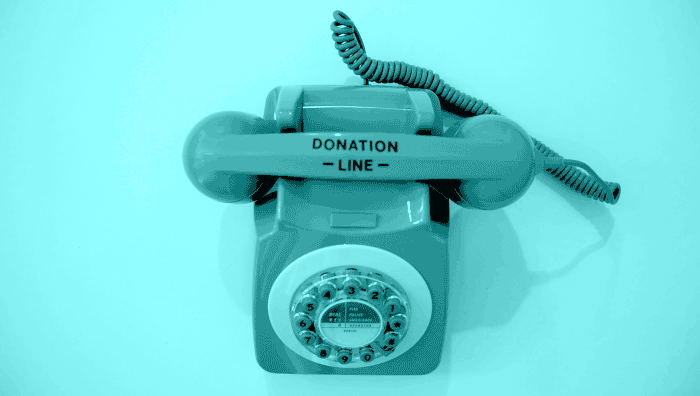 The start of the shakedown.
The start of the shakedown. Passing the hat? We’re way past that.
Passing the hat? We’re way past that. Ice, ice baby.
Ice, ice baby.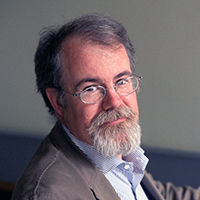 William Easterly
Is an economics professor at New York University and author of The White Man’s Burden: Why the West’s Efforts to Aid the Rest Have Done So Much Ill and So Little Good.
William Easterly
Is an economics professor at New York University and author of The White Man’s Burden: Why the West’s Efforts to Aid the Rest Have Done So Much Ill and So Little Good.
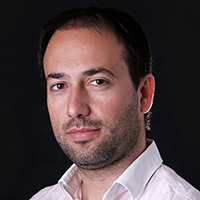 Dimitris Xygalatas
Is an anthropologist at the University of Connecticut who studies how extreme rituals - from fire walking to the ice bucket challenge - forge intense social bonds
Dimitris Xygalatas
Is an anthropologist at the University of Connecticut who studies how extreme rituals - from fire walking to the ice bucket challenge - forge intense social bonds
 Sheila C. Moeschen
Is the author of, Acts of Conspicuous Compassion: Performance Culture and American Charity.
Sheila C. Moeschen
Is the author of, Acts of Conspicuous Compassion: Performance Culture and American Charity.
 Michael Wasserman
Is a philanthropist and co-founder and CEO of Tiltify, a platform that creates opportunities for livestreaming to be directed towards charity.
Michael Wasserman
Is a philanthropist and co-founder and CEO of Tiltify, a platform that creates opportunities for livestreaming to be directed towards charity.
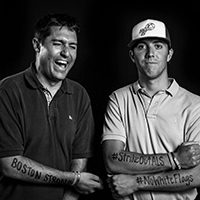 Andrew Frates
Is the brother of Pete Frates who founded the ALS Ice Bucket Challenge. He’s also a motivational speaker.
Andrew Frates
Is the brother of Pete Frates who founded the ALS Ice Bucket Challenge. He’s also a motivational speaker.
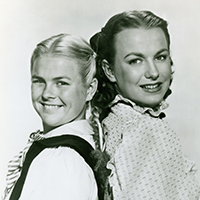 Cynthia Bell
Was a member of the musical act the Bell Sisters who performed alongside stars like Bing Crosby in some of the earliest telethons in the 1950s.
Cynthia Bell
Was a member of the musical act the Bell Sisters who performed alongside stars like Bing Crosby in some of the earliest telethons in the 1950s.
 Simon Moss
Is the co-founder of Global Citizen, a social action platform that wants to end global poverty by 2030.
Simon Moss
Is the co-founder of Global Citizen, a social action platform that wants to end global poverty by 2030.